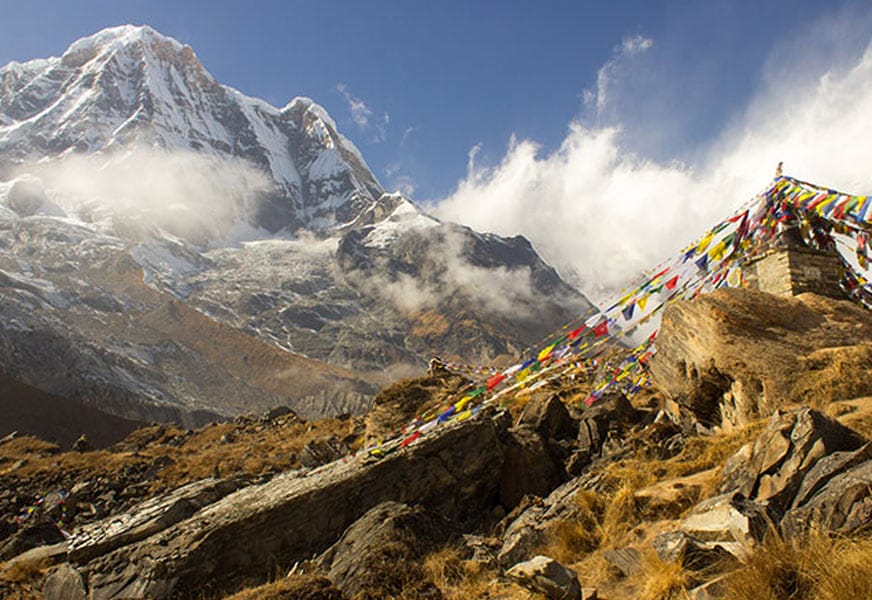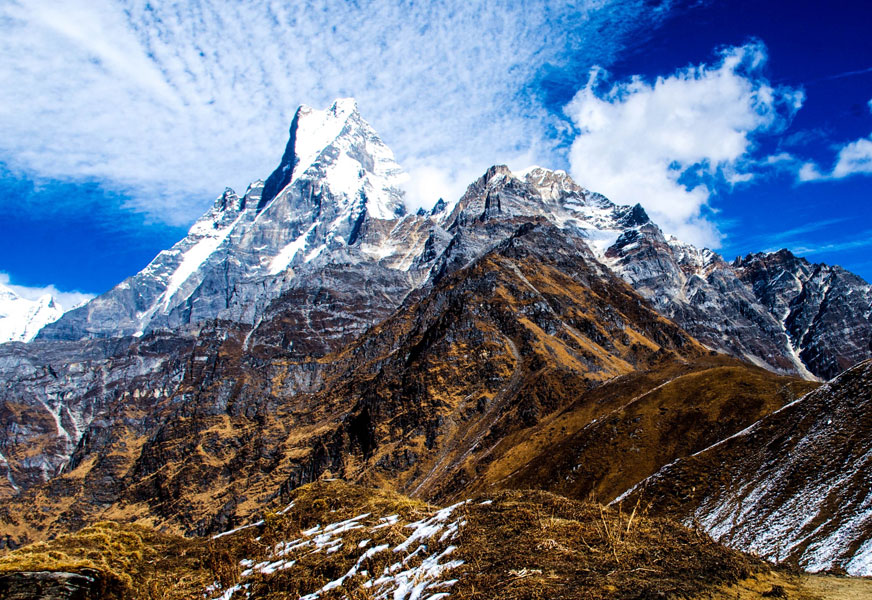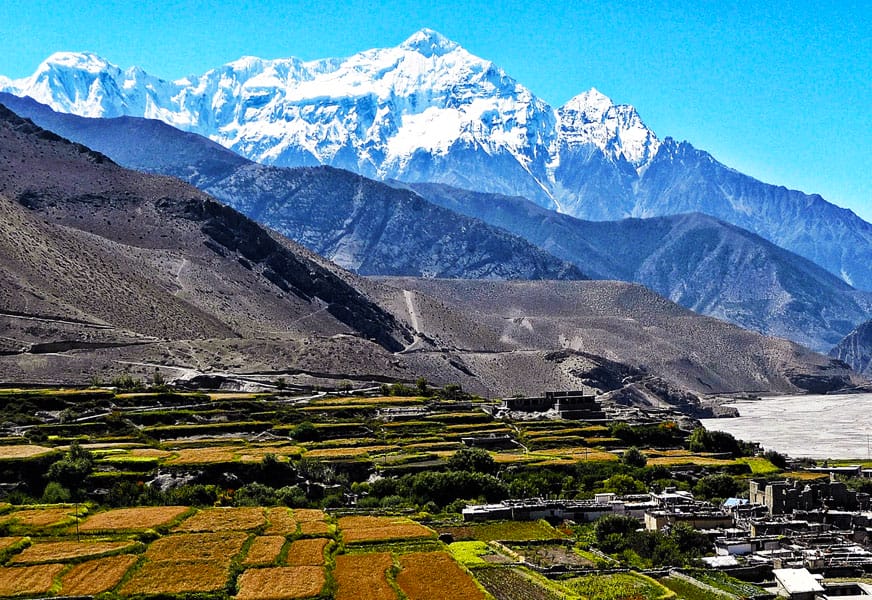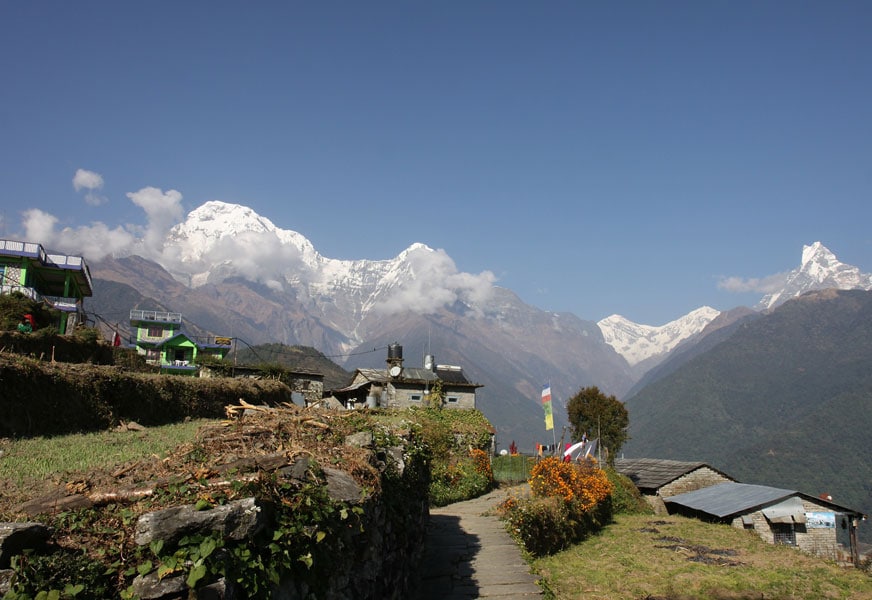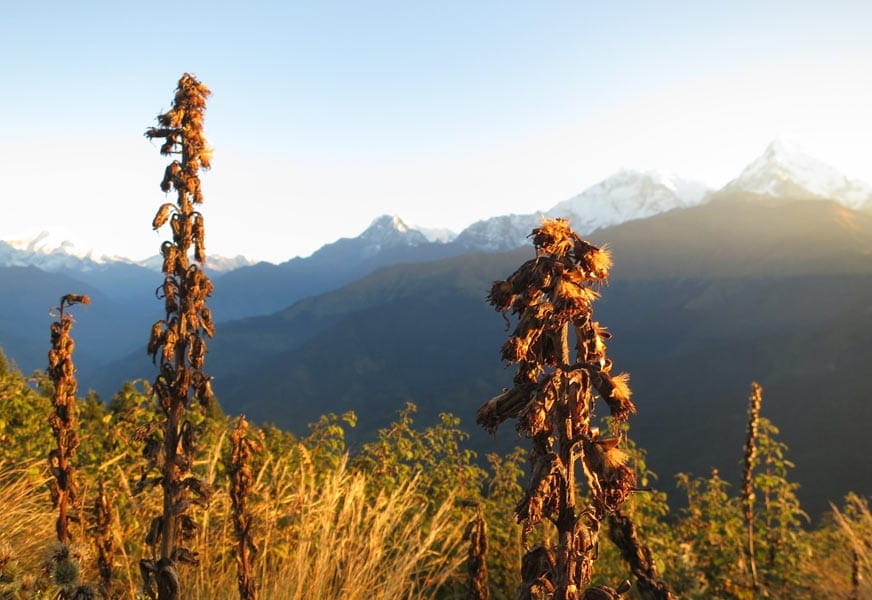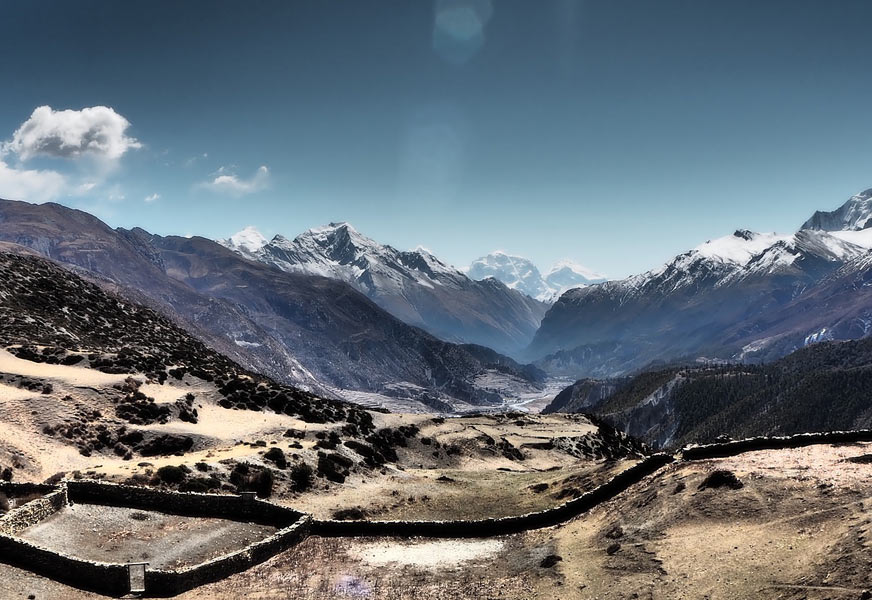Annapurna Skyline Trek
Annapurna Skyline Trek is also known as Royal Trek which is named after prince Charles who walked through this route in the early 1980s. It offers a unique blend of cultural immersion and stunning natural beauty, nestled in the mighty Annapurna range.
It is shorter and relatively easier trek compared to some of the longer treks in the region. The major attraction of the Annapurna Skyline Trek is the sunrise view from Poon Hill, a popular viewpoint situated at an altitude of 3,210 m. The trek typically includes stops at popular destinations such as Ghorepani, Tadapani, Poon Hill, and Ghandruk, where travellers can experience local hospitality and immerse themselves in the rich traditions and culture of the Gurung and Magar communities.
The trek also offers several unique adventure activities, including paragliding, zip-lining and bungee jumping. These activities provide trekkers with unique and thrilling perspective of the Annapurna region, as well as an opportunity to experience the natural beauty from different angle.
Difficulty of Annapurna Skyline Trek
The Annapurna Skyline Trek is a moderate to challenging trek. The trek involves walking for several hours each day, often over steep and uneven terrain. The difficulty level can vary depending on fitness level. People with average fitness cam complete this trek without difficulty. Trekkers are acclimatized to prepare them for easy voyage.
Best season for Annapurna Skyline Trek
The best seasons to go on Annapurna Skyline Trek is during spring (March to May) and autum (September to November ) seasons. During these months, the weather is clear and dry, making for good trekking conditions. In addition, the temperature is mild and the skies are often clear, offering spectacular views of mountains.
Trekking in the off-seasons i.e. monsoon (June to August) and winter (December to February) can be more challenging due to the weather conditions. During monsoon seasons, the trails can be muddy and slippery and during winter season the trails can be covered in snow and the temperature can drop below freezing. However trekking in off-seasons can also have its advantage. The trails are less crowed which means you can enjoy the natural beauty and serenity of area without tourist crowd. If you are up for a challenge and want a unique experiences, trekking in the off-seasons can be a great option.
Why to trek Annapurna Skyline?
The Annapurna Skyline Trek is a popular trek in Nepal because of its astonishing mountain views, varied landscapes and cultural experiences. The trek takes through lush forest, traditional villages offering a diverse range of experiences. The trek has well established tea house, lodges along the route which offer comfortable accommodation. Along the way you will be rewarded with incredible views of Annapurna mountain ranges. You will also have opportunity to experience the local culture and hospitality of Gurung and Magar people, who are known for their friendliness and warmth. Overall, the Annapurna Skyline Trek is a great choice for trekking experience in Nepal.

